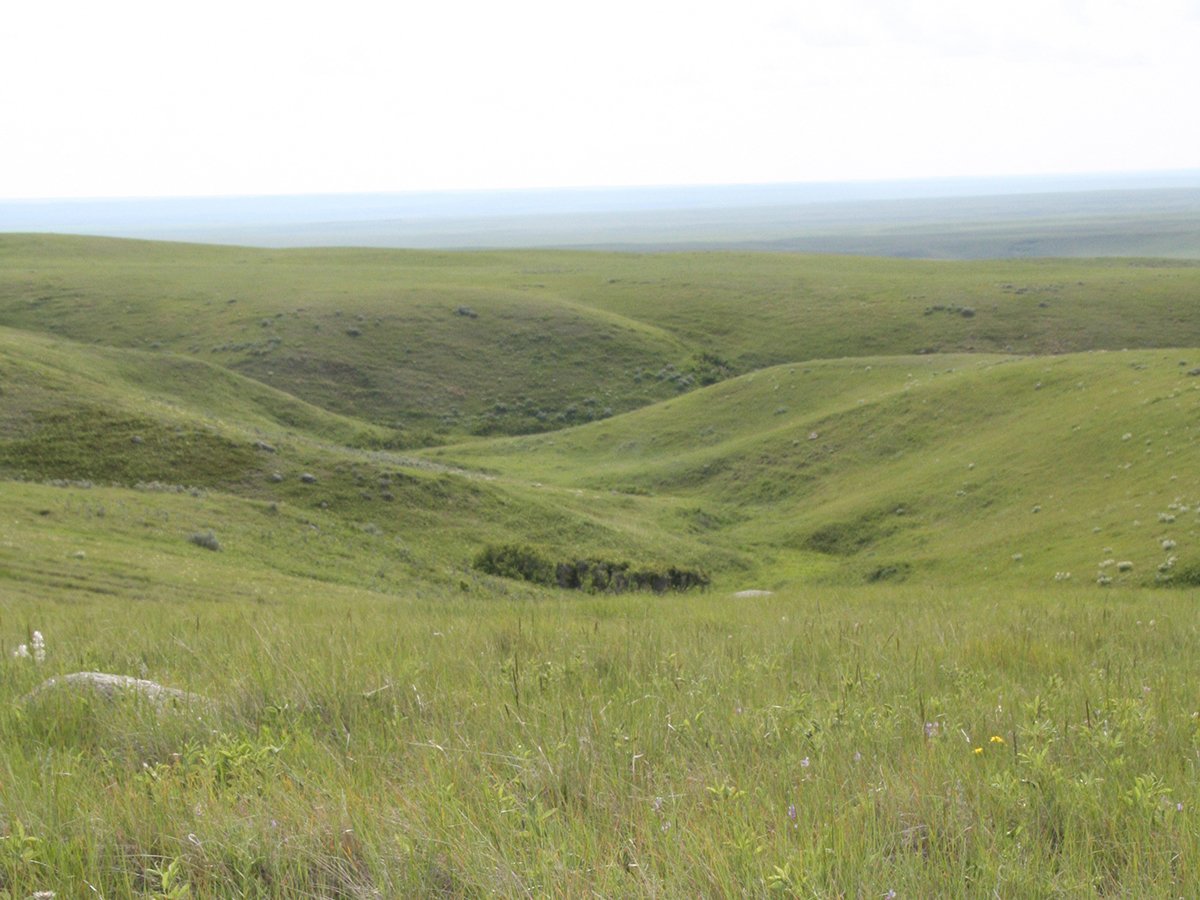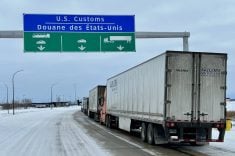The separation of pairs on the trail often results in animals bawling and leaving the herd seeking their mother or calf
It’s sometimes easier to trail cattle rather than haul them to a new pasture, depending on the distance involved.
Some people use quads but in many situations, cattle are moved using horseback riders, especially if the herd is being moved across open country with difficult terrain.
When cows with calves are trailed, they often get separated if not given a chance to stay paired. This creates a stressful situation for the cattle and often results in animals bawling and leaving the herd seeking their mother or their calf.
Read Also

Alberta irrigation project on grasslands approved
Environmental concerns raised by Alberta conservation groups over irrigation expansion project within rural municipality
Though some people enjoy the action and excitement of chasing cattle, this kind of handling is bad for the animals. As one old cowboy said a long time ago, the fastest way to move cattle is slowly. Let them go at their own speed, quietly, so they can stay mothered up.
“Using low-stress livestock-handling principles taught by Bud Williams and his protégés like Steve Cote and other stockmen reduces problems by preventing cows and calves from becoming separated,” says Chad Cheyney, a Butte County extension educator at the University of Idaho.
“When you gather the herd to move them to a new pasture, give the cows plenty of time to find their calves before you start to move them.”
He also suggests giving the herd a few moments for nursing so they stay together for the whole trip.
All too often, cowboys quickly gather cattle in a big pasture and don’t check to see if they have pairs or not. Then some animals try to go back where they started.
Once the cattle are paired, allow them to line out and travel as they would normally without human interference. There is no need to bunch them in a mob where pairs get separated and no point in moving them fast or chasing them with dogs.
“Travel speed is important,” says Cheyney. “People on four-wheelers often go too fast. Horses walk at four to five m.ph. Cows travel comfortably at two to three m.p.h., and with young calves this could be slower. Slow your horse if necessary by riding a zigzag pattern behind the cows.”
Once the herd gets started, it will keep moving because cows naturally follow one another.
“Calves travel slower, so pay attention to their pace and level of stress. If the speed is too fast or distance too far, stop the herd now and then to let them rest and mother up,” Cheyney says.
At the destination, don’t just drop the herd and leave. Spend time “settling” the cattle, making sure they’re mothered up. Often cows are so eager for new grass that they start grazing and don’t pay attention to their calves. If calves lose track of their mothers, they may try to go back where they came from.
If a cow’s calf isn’t with the herd, let her go back for it, Cheyney advises. Most cowboys leave gates open during a move so any split-up pairs can go back and reunite, then return to the main herd on their own. A person can go back the next day to shut the gates.
The best low-stress handling is usually accomplished without dogs, but in some cases one cowboy and a good dog can move a lot of cattle. The dog must be quiet and always under the control of the person moving the cattle.
Some cows become upset with dogs present, especially if they perceive the dog as a threat to their calf. A good dog travels at the rider’s heels, only going after an animal when sent, and often directed by a hand signal rather than verbal command.
Well trained, obedient and quiet dogs can help, but often a cattle drive is a social event with many riders and everyone brings their dog.
“The result is a pack of barking, biting dogs that worry the cows or force the cows ahead too quickly, separating them from their calves,” says Cheyney, who recommends asking helpers to leave their dogs at home.
Bob Kinford of Van Horn, Texas, is a consultant who shows ranchers how to rotationally graze large pastures without fences or herders by using herd psychology. He gives advice on low-stress cattle handling and on moving large herds.
“Their natural instinct is to act as a herd and stay together but this only happens when you remove human-induced stress,” he says.
“The cows I handle know I’m moving them to new pasture. I leave the gate open in case I miss a calf. A cow can go back and get her calf and the other cows never try to come back.”
Kinford says a cow must be made to think the move is her purpose rather than the handler’s purpose.
“When they are acting as a herd, you start them in the direction you want them to go and just keep the front end going and the back will bring itself.”
Cows in the rear don’t want to be left behind.
“If you don’t chase or make it a bad experience for them, they will come on their own. Do things that make sense to the cow, and she’ll go. An example is when you have to take cattle through brush. People tend to bunch them up and push them faster to get through or past it, and then calves start bawling, then they’re all bawling as cows try to find their calves.”
The cows are more worried about their calves than in going the right way.
“If you can go to the front and keep the leaders moving, and let the cattle stay real loose, following, they won’t go through that brush and you won’t have a problem.”
When Kinford starts moving cattle, he gets them standing and then goes to the front and walks halfway along the herd a few times until they start to move.
“The ones in the back just keep grazing until the cattle in front start to move. It’s like waiting at a red light, and when it turns green, we go. You don’t have to do anything on the back of the herd. They just follow the others once they have room to move.”
Steve Cote of Arco, Idaho, has done a lot of work on better ways to handle range cattle using low stress stockmanship.
“We need them to get mothered up and travel at a good walk. They need to be able to turn as a herd and slow and stop. There are techniques for doing these things without stressing the cattle,” he says.
“It’s like handling horses. If you want a cow to go, use pressure and release, like you would with a horse. Cattle want to be a herd, but they also don’t want to be stressed in the herd or they won’t relax.”
If pairs get separated, let them drift and stop.
“If I have to, I walk up the sides and slow them to let them get mothered. When handled this way, cattle won’t view you as aggressive. They won’t be as worried if their calf is a little bit away from them.
“Everything you do should be focused on how cows perceive things. If some start bawling for their calf, they will all be stressed and it won’t work.”

















